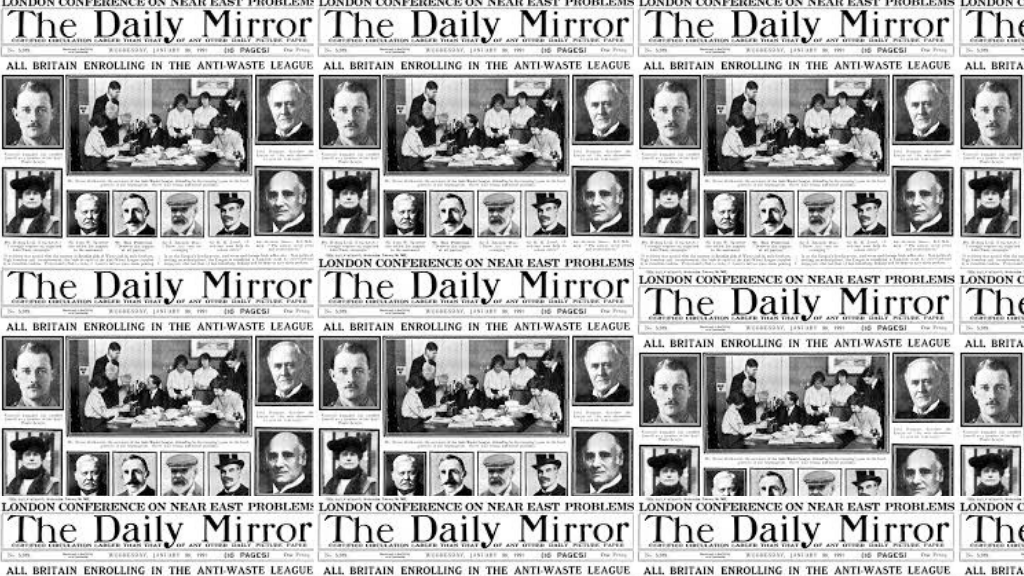Nick Pearce is Professor of Public Policy and Director of the Institute for Policy Research (IPR) at the University of Bath.
Professional historians aside, few people today have heard of Francis Charteris, 10th Earl of Wemyss, but he occupies an important place in the annals of British libertarianism, as a founder and financial sponsor of the Liberty and Property Defence League (LPDL). For the best part of 30 years, from its foundation in 1882, the LPDL kept up a ceaseless campaign against state regulation and economic intervention, rallying it supporters against everything from liberal social reform to the spectre of land taxes, trade unionism, municipal public services and Fabian socialism. At its height in the 1880s and 1890s the league published thousands of leaflets and pamphlets, organised lectures all over the country, sent out ‘liberty missionaries’ to public parks, and even staged ‘liberty-limelight entertainments and anti-socialist slide shows’.[1] It was particularly successful in Parliament, where Wemyss led trench warfare with like-minded ‘Individualists’ against legislation that encroached on social and economic ‘liberties’ and lobbied hard for organised business interests.
While the LPDL’s defence of individualism and the sectional interests of Victorian employers constituted a rearguard action against the rising forces of organised working-class politics and state intervention in the economy, it was nonetheless more than an energetic pressure group of mere historical interest. For organisations such as the LPDL have regularly appeared in British politics, notably in the aftermath of economic crises, mobilising both intellectual and political resources to contain and restrain the state. They have played a particularly important part in conservative politics, inside Parliament and at grass-roots level – and not just in the ideological development of Thatcherism, with which libertarian think-tanks and pressure groups are commonly associated. The history of these movements is therefore instructive for understanding the dynamics of contemporary British politics, as Conservative backbenchers agitate against COVID-19 restrictions and Ministers start to eye up fiscal options for the post-COVID state.
The libertarian campaigns of the late Victorian era took place against the backdrop of the economic depression of the 1870s and its aftershocks. In the Edwardian era, the cudgels of anti-statism were taken up by a clutch of largely conservative organisations that were formed to oppose employment legislation and the development of the welfare state, such as the British Constitutional Association and the Anti-Socialist Union. Arguably, the impact of these organisations was limited to tactical victories on particular pieces of legislation; this was an era of relative economic prosperity in which the big arguments in high politics concerned Tariff Reform, Empire and the future of Ireland. But in the aftermath of the First World War, and the economic crisis of the early 1920s, more broadly-based campaigns emerged to challenge the growth of the state, and these played an important role in shaping Conservative politics.
Tax, public spending and the threat of socialism were the focus of these campaigns. To help finance the war effort, the standard rate of Income Tax had been increased from 6% in 1914 to 30% in 1918, and an Excess Profits Duty introduced. With rising inflation and reductions in the tax-exempt earnings limit, the number of income taxpayers had almost trebled to three million. In 1919, a ‘Middle Class Union’ was formed by figures on the anti-socialist Right to fight increased taxes and to defend the interests of small traders, professionals and property owners. That year, Lord Rothermere’s son stood on an anti-waste ticket in a by-election in Thanet, and when the Chancellor, Austen Chamberlain introduced a Corporation Tax and increased the Excess Profits Duty in his 1920 Budget, the stage was set for a reaction that would unite sections of the Tory business class and large swathes of middle-class taxpayers. An ‘Anti-Waste League’ was formed with the backing of Rothermere and the Daily Mail, standing candidates on a platform of opposition to increased tax and spending. It defeated Conservative Unionist candidates in two by-elections in 1921 and prompted leading conservative figures to set up their own ‘People’s Union for Economy’ to act as ‘a parliamentary catspaw for the anti-waste movement’.[2]
The Coalition government responded to the anti-waste campaigns with the formation of a committee under the direction of a businessman, Sir Eric Geddes, to find cuts public spending, and the so-called ‘Geddes Axe’ then fell on departmental budgets. But it was not enough to save the Coalition. Against a backdrop of rising unemployment and agricultural distress, Tory grassroots discontent, hostility to Lloyd George, and backbench opposition to government policies across a range of issues, precipitated the famous meeting of Conservative MPs at the Carlton Club on the 19th October 1922 which brought the Coalition government down.
As the historian E.H.H. Green noted[3], there are parallels between this period and that of the ‘middle class revolts’ of the 1950s, when campaigning organisations challenged the growth of the state, the power of trade unions and the impact of inflation on household budgets. Henry Price, a businessman turned Tory MP, formed the ‘Middle Class Alliance’ in 1956 to campaign against taxation and the high cost of living, and ‘to preserve the middle classes for the service of the nation’. In the same year, yet further to the right, the self-publicist libertarian Edward Martell formed the ‘People’s League for the Defence of Freedom’ to campaign for lower taxes, spending cuts and curbs to trade union power. It fed off the impact of the 1956 recession and helped channel MPs’ anxieties about middle class disaffection to the Conservative high command. As in the 1920s, the demands of these campaigns intersected with Gladstonian orthodoxy in the Treasury, which fought a long running battle in the 1950s to prioritise reducing inflation and tighten fiscal policy, and with intellectual forces on the Conservative Right, where MPs like Enoch Powell and the Institute of Economic Affairs carried the torch in economic policy for laissez faire Tory traditions. By the middle of the 1970s, when the Freedom Association and Adam Smith Institute were both founded, libertarian organisations and an advance guard of New Right think-tanks would exert a powerful gravitational pull on a new generation of Conservative MPs and activists.
The decline of the rank and file membership of the Conservative Party since its post-war high water mark, the morphing of grassroots campaigning organisations into ‘astro turf’ lobbying groups like the Taxpayers Alliance, and the rise of social media mobilisations of populist revolt, have changed the political dynamics of anti-state campaigns. Yet similar patterns of politics characterised the aftermath of the Great Financial Crisis in 2008, when a chorus of think-tanks, campaign groups and media outlets promoted austerity and a rolling back of New Labour spending on public services. In tandem, official thinking in the Treasury and the Bank of England tacked hard towards austerity. Spending cuts dwarfed tax rises in the decade of deficit reduction, and only older voters were spared the axe.
The current government has disavowed austerity. It has engaged in some creative economic policy responses to the COVID-19 pandemic. But fiscal retrenchment looms large again in the Treasury as it looks ahead to the 2020s, and if the history of the Conservative Party is a good guide, we can expect stiff and active resistance to tax rises that fall on the propertied middle classes and the retired population. Infrastructure spending will increase, but not social security benefits. Anti-waste, ‘efficiency’ drives will reappear. Think-tanks and campaign groups will urge cuts in ‘wasteful’ spending. The role of the state – expanded well beyond the wildest fantasies of a late Victorian libertarian – will come under persistent challenge. And despite a healthy government majority, backbench Conservative MPs will be a crucial vector through which these demands are mobilised.
The state-sceptic Right will not be the sole or even dominant force, however. While the history of the Conservative Party has often been written as a struggle between laissez faire economic liberals and ‘One Nation’ social reformers, the reality is more complex. Different ideological and political groupings in the party have waxed and waned on the axes of foreign policy, religion and social mores, and personal loyalties and naked political calculation, as well as economic and social policy. In each of the crises that have incubated anti-state Conservativism, shifting political alliances and ideological crosscurrents have been at work. Today’s Conservative Party is no different, combining libertarians who are suspicious of the pandemic state, with Red Wall social conservatives who support public services and state intervention in the economy. Euroscepticism runs across both groups, as does newly minted hostility to China. Outside of each, the pragmatic centre-right still constitutes a sizeable body of MPs, while in the country at large, the party’s electoral coalition now includes a bloc of older working-class voters whose interests must be reconciled with those of shire and suburban Villa Tories. Fiscal policy will need to stretch across this coalition, in an era when pressures on state spending are rising and the motors of capitalism are spluttering. The politics of the pandemic and the fracturing of the UK layer further complexity onto the situation.
This leaves contemporary Conservative politics in a highly fluid state, one which the UK’s exit from the European Union – No Deal or not – will serve to make even less ideologically predictable (and meanwhile, a post-Brexit politics is already taking shape in the Labour and Liberal Democrat parties). One of the more familiar lessons of the Conservative Party’s history is that similar swirling currents have defeated and defenestrated Conservative leaders. They may yet do so again.
[1] Edward Bristow, The Liberty and Property Defence League and Individualism, The Historical Journal, xviii, 4 (1975), pp. 761-789
[2] E.H.H Green (2002) Ideologies of Conservatism, Oxford: OUP, p124-5
[3] Ibid p 134
All articles posted on this blog give the views of the author(s), and not the position of the IPR, nor of the University of Bath.
Respond




